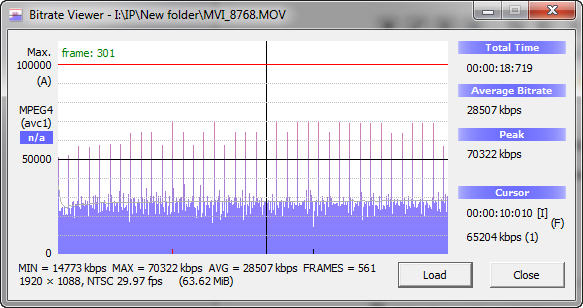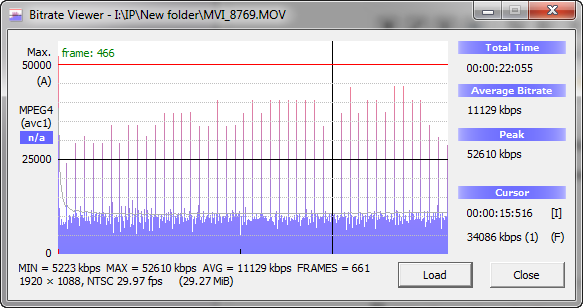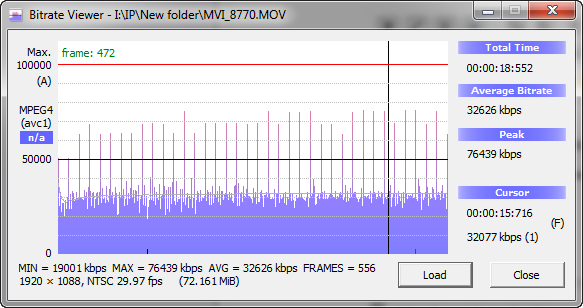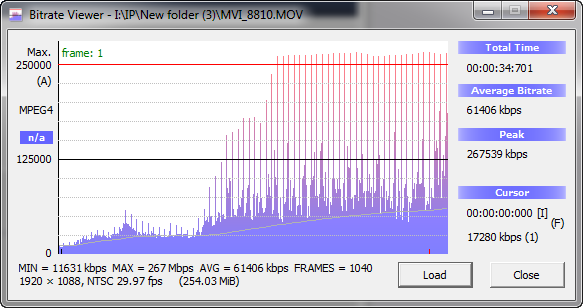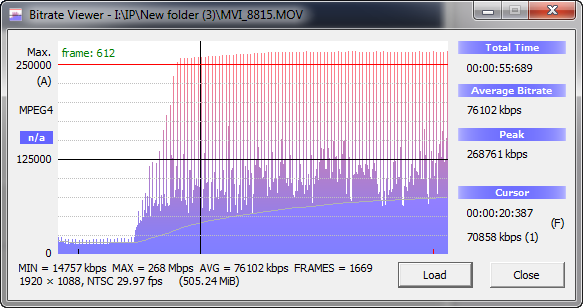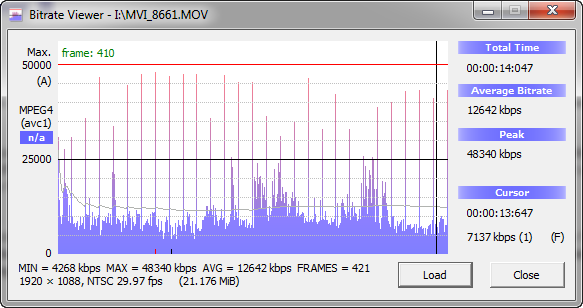Quote from: 1% on August 25, 2012, 05:22:41 AM
Stream cut ~90mbps Gop3 Video
That's looking really good. GOP size correct and you have a nice low IP ratio.
And a quick look on the laptop the video looks great. No blocking with the fast motion and details appear to be fine.



